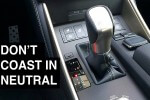When you are driving in heavy rain, you are always wondering what could be happening to your car. You want to prevent water damage because many parts in your car can rust, thus affecting their lifespan and costing you much more money in return. But water is not your only worry when you are driving in the rain. There are waterlogged potholes that could swallow a small car like a Toyota Vitz whole (just kidding) and cause costly damage to your vehicle’s suspension system.
Driving slowly will not necessarily save your car from the damages that accompany elnino. The secret is to know how to take care of the car to keep water and water-related damage at the minimum.
Here are 8 things to do:
1. Avoid driving in water pools and if you must drive, make sure that you do so at a low speed. If you splash through a water pool, your car is going to stall. You have seen this a good number of times. If you have to restart the car a few times when it is stalled in the water, it will cause water regress in the engine, thus causing more damage. To prevent this, if the car stalls in the water, have it pulled out of the water before attempting to restart it.
2. You should change your tires in the rainy season to prevent skidding in the rain because old and worn out tires may not serve you just right. If your tires are old, they will suffer much more if you have to drive in the rain with them. Skidding in waterlogged roads is dangerous as it could result to ramming into a tree or a head on collision with oncoming vehicles.
3. Remove the spark plugs if you are stalled in deep water and start the car over carefully to avoid hydrolock, a situation where water gets to the cylinders and destroys the engine.
4. There are many contaminants in the rainwater and in the mud too. Such could damage your car. For example, if there are any exposed metal parts in the car, the rainwater could cause corrosion and eventual damage of the parts, requiring replacement. In addition, rainwater contains contaminants that could cause corrosion in the bodywork of the car. You could require a touch of wax and polish for the car before the rainy season starts.
5. Always keep the car clean. The worst that you could do is to assume that the rainwater cleaned it for you. When the car dries up after a shower drench, you will notice patches on the paint. These are contaminants that the rainwater contained. You need to clean them away.
6. If you park your car outside, use a cover for your car to prevent water damage. Get a cover that will prevent water damage and at the same time let air escape such that none is trapped inside the car.
7. Ensure that the seals on the doors, windshield and windows are working so that all water drains away and none seeps inside the car. A car that leaks can store many unpleasant surprises for the occupants.
8. Learn to drive carefully on waterlogged roads. Reduce your speed because if you hit a water pool at high speed, it is the same as hitting a wall, albeit a moving one this time. You will lose control of the steering and the car will stall. Careful driving saves life.







